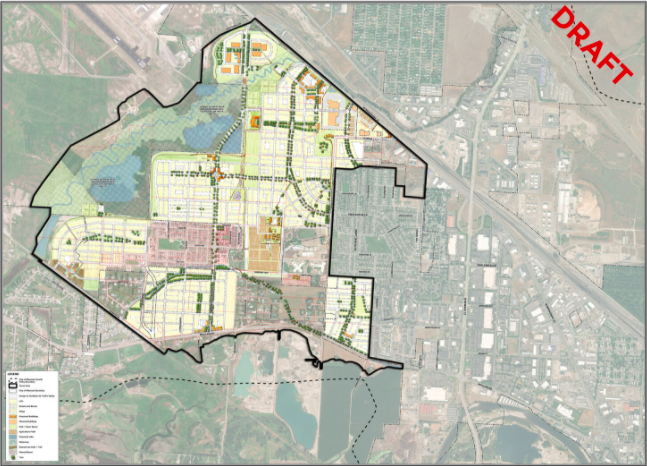This site provides an overview of the Virtual Charrette held March 23rd to 27th. It includes a list of the events and meetings that took place throughout the week. A summary of each day’s events is included below, including a series of videos explaining the planning process and the work completed during the Charrette. We encourage you to visit this page often and to share this website with everyone in Missoula.
Download the Consolidated Planning Board Presentation, June 16, 2020The Mullan Area Master Plan
The Mullan Area Master Plan is an opportunity for the City and County to further evaluate and align land use planning and regulations, transportation elements, and plans for amenities in an area of the community currently receiving significant development pressure. The area of focus is located on the western edge of the city limits, between Mullan Road and West Broadway, west of Reserve Street and east of the Missoula International Airport. The Mullan BUILD project, a separate, concurrent effort, is focused on developing the roads and infrastructure to support residential and commercial development in this area.
In 2015, the City adopted a new growth policy called “Our Missoula,” that includes an “inward focused” directive promoting compact development in areas where infrastructure already exists, and mixed-use and dense development along major transportation/transit corridors. Shortly after adoption of the City’s Growth Policy, The MPO adopted a Long Range Transportation Plan, “Activate Missoula”, that established very ambitious mode split goals in order to cut drive-alone trips in half. The plan notes that achieving these goals will require ambitious policies and commitment from the City and County.
In spring 2019, the County updated a land use plan for the unincorporated areas of the Missoula Valley, called the Missoula Area Land Use Element. The Missoula Area Land Use Element calls for a “one community” directive that supports the city’s inward focused directive and identifies ways the county can better facilitate growth and development in the unincorporated areas of the Missoula Valley. One of the implementation actions in Missoula Area Land Use Element was joint master planning between the city and county on the city’s western edge.
The recently adopted growth policy amendments completed by the city and county describe the values important to the community and a vision for growth that is consistent with those values. The master plan is an opportunity to align our land use planning to our values and recognize our constraints.
Overview Film
Jason King, Project Director for the Consultant Team, provides an overview of the project in the film below. For more information on what a Charrette is, please visit the About section.
Land and Water: An Intro to the Ecosystem
Jason King, Project Director for DK&P, discusses Grant Creek, a highly impacted tributary of the Clark Fork River, and the environmental and historical sensitivities the Mullan Neighborhoods and B.U.I.L.D grant project must navigate in order to improve the health of the valley.
The Draft Plan
The elements of the Draft Plan are posted on this page for your review and comment. These elements will be updated as the plan is refined.
The Plan
Presentation of the Draft Mullan Area Master Plan to the Missoula Consolidated Planning Board on June 16, 2020
Illistrative Plan
The illustrative plan provides a picture of the overall structure of how the ideas, strategies and designs for the Mullan Area can come together to create a great new place for Missoula. It shows the extent of the neighborhoods and depicts the natural areas, agriculture, lakes and existing development that make up the area. The illustrative plan incorporates the conversations had over the charrette week, including a range of housing types and prices, the B.U.I.L.D. Grant, creek restoration, safe streets, historic and agricultural preservation, economic development, parks and open space, trails, and existing and planned developments. By visualizing how everything can work together, individual projects and efforts can build upon one another while not foreclosing on longer range possibilities and objectives.

The illustrative plan is not a regulatory document, but is meant to help guide future development and provide insight into how proposed development cab fit in the area. In DRAFT form, the illustrative plan will be refined over the coming weeks and months as we continue to receive feedback and hold additional conversations.
Virtual Charrette Calendar
